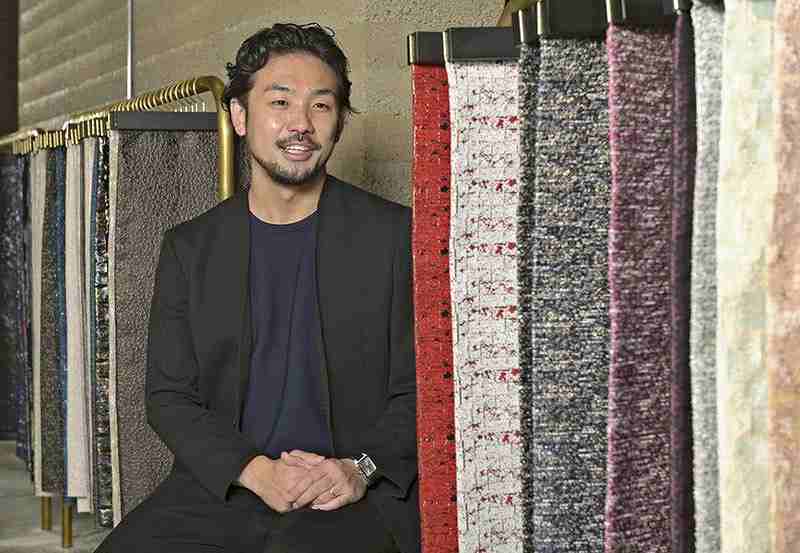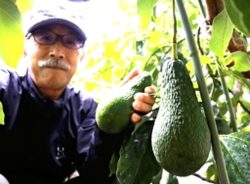
Masataka Hosoo, Hosoo Co.’s 12th generation president
November 10, 2021
Hosoo Co., a Kyoto-based Nishijin-ori textile maker founded in 1688, is seeking to mend the shrinking market for traditional Japanese crafts by expanding overseas through partnerships with high-end international brands like Hermes and Chanel.
Yomiuri Shimbun Staff Writer Shoichi Shirahaze recently spoke with the company’s 12th-generation president, Masataka Hosoo, who is convinced that traditional crafts still have enormous untapped potential. The following is excerpted from that interview.
The market for kimono, for which most Nishijin-ori textile is used, was about ¥280 billion last year, or one-fifth of its all-time peak. The novel coronavirus pandemic has continued to make things hard for us Nishijin-ori makers.
But with 1,200 years of history, the industry has survived many crises before.
For example, when the capital was moved from Kyoto to Tokyo after the Meiji Restoration in 1868, the aristocracy and other influential figures who were the industry’s main customers disappeared overnight. Nishijin-ori makers responded by embracing machine production, allowing their once exclusively hand-woven fabrics to be brought within reach of a wider audience.
Instead of shying away from innovation, the industry even sent engineers to France to bring back cutting-edge looms at great expense and risk — one of the expedition members did not survive the return voyage.
In 2008, our company embarked on the unprecedented step of expanding the Nishijin-ori business overseas.
At first, we had no idea how to go about marketing the product, but the shrinking market pushed us to keep going.
We spent a year exhibiting Nishijin-ori cushions and sofas at exhibitions in Europe and elsewhere, to little avail.
We were at our wit’s end when world-famous architect Peter Marino called with a request. Marino had seen a Nishijin-ori obi at an exhibition in the United States and wanted to use the textile for the interior of a Dior store.
The Nishijin-ori fabrics used for obi and kimono are about 30 centimeters wide, but the Dior design called for a custom fabric measuring a full 150 centimeters across.
Developing a loom to do the job was a major investment. Despite some opposition from within the company, I argued we needed to go all in: “If we can’t make this happen, we’ll never be able to compete overseas.”
Unraveling stereotypes
Meeting Marino prompted me to reconsider my preconceptions about Nishijin-ori.
While I had assumed that patterns with a strong Japanese flavor would appeal to overseas customers, Marino instead focused on Nishijin-ori’s use of gold leaf and three-dimensional weaving techniques.
The experience showed me a new area of potential growth in interior design. Now, the overseas market accounts for about 20% of our firm’s sales.
I never intended to take over the family business. I actually used to be a musician. Now, as company president, I try not to get caught up in stereotypes.
I think it’s important to collaborate across different industries in order to make new discoveries. Last year, I created a new division within the company tasked with systematically researching and developing innovative dyeing and weaving techniques.
The team has about 10 projects underway, including a partnership with the University of Tokyo and others to develop “smart textiles” that incorporate cutting-edge organic light-emitting diodes (OLEDs) in response to temperature changes, and work with experts to study dyeing methods of the Heian period (794-1192).
Pursuit of beauty
Nishijin-ori has survived because people of different eras have considered it beautiful. The pursuit of beauty by craftsmen who seek to produce superb products is something it has in common with other traditional crafts.
To further explore these possibilities, I cofounded the GO ON Project in 2012, together with five other members of my generation active in fields such as woodworking, Kyoto-style wire mesh, bamboo crafts and pottery. We collaborate with artists, designers, and others to employ flexible ideas in the creation of new worlds. The project’s goal is to help traditional crafts evolve through the use of the latest technology.
One example is a collaboration with Panasonic Corp. to develop a speaker that produces sound when fabric is touched.
Kimono developed alongside other features of Japanese culture such as tea ceremony and flower arrangement.
Kyoto is one of the few places that can boast such a distinct “cultural ecosystem” that has emerged from a dynamic interweaving of traditional cultures.
The city harbors many unique techniques, materials and stories that remain largely unknown to the outside world.
These traditional crafts have tended to only be sold within Japan. But there is no reason why these crafts could not be developed into an internationally recognized brand name, on par with Cartier or Louis Vuitton.
I believe that the pursuit of this goal, together with constant innovation, will in turn be what helps preserve traditional culture.
Masataka Hosoo
After graduating from university, he performed as a musician and worked for a major jewelry maker before joining Hosoo Co. in 2008. He became the company’s 12th-generation president in August 2020. Since 2016, he has also served as a research fellow at the Massachusetts Institute of Technology Media Lab. He was born in Kyoto and is 43 years old.
"Society" POPULAR ARTICLE
-

M4.9 Earthquake Hits Tokyo, Neighboring Prefectures
-

Israeli Tourists Refused Accommodation at Hotel in Japan’s Nagano Pref., Prompting Protest by Israeli Embassy and Probe by Prefecture
-

M7.5 Earthquake Hits Northern Japan; Tsunami Waves Observed in Hokkaido, Aomori and Iwate Prefectures
-

Tsukiji Market Urges Tourists to Avoid Visiting in Year-End
-

M5.7 Earthquake Hits Japan’s Kumamoto Pref., Measuring Upper 5 Intensity, No Tsunami Expected
JN ACCESS RANKING
-

Tokyo Economic Security Forum to Hold Inaugural Meeting Amid Tense Global Environment
-

Keidanren Chairman Yoshinobu Tsutsui Visits Kashiwazaki-Kariwa Nuclear Power Plant; Inspects New Emergency Safety System
-

Imports of Rare Earths from China Facing Delays, May Be Caused by Deterioration of Japan-China Relations
-

University of Tokyo Professor Discusses Japanese Economic Security in Interview Ahead of Forum
-

Japan Pulls out of Vietnam Nuclear Project, Complicating Hanoi’s Power Plans























